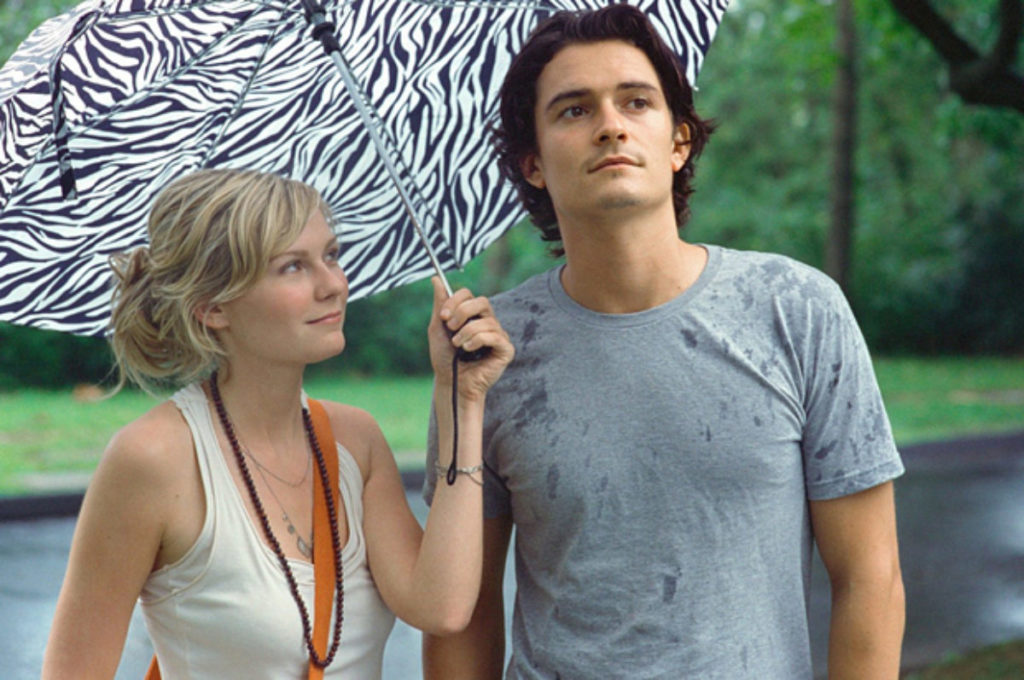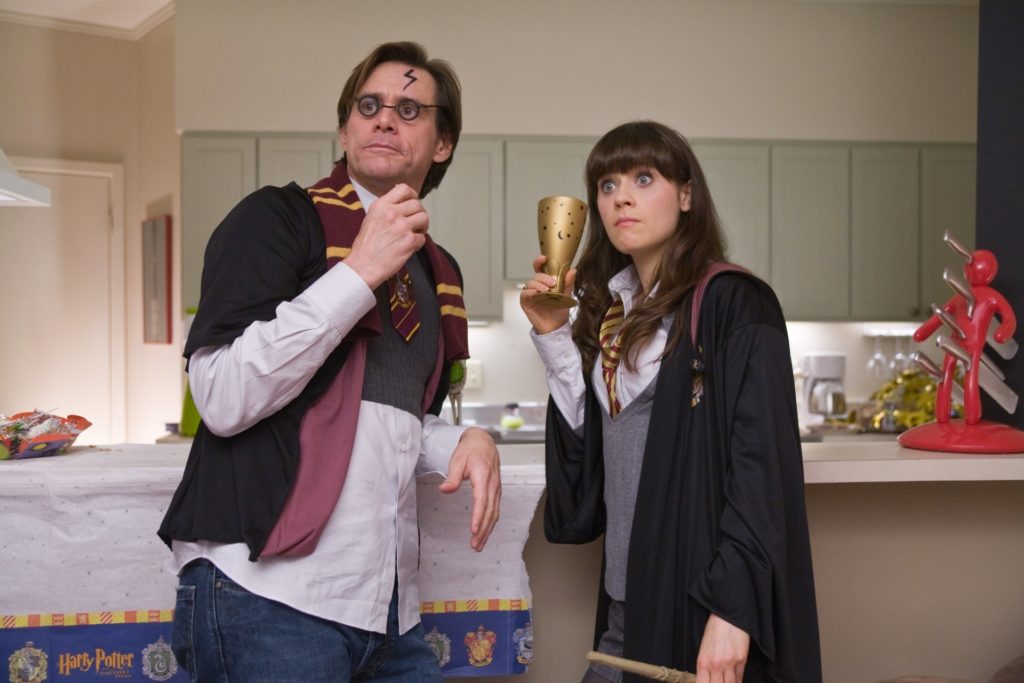By Shanee Edwards · September 14, 2022

If you love a good rom-com you’ve likely heard of the “Manic Pixie Dream Girl” trope. The term is a mouthful and may cause your head to spin. That’s on purpose. The type of gal being described typically wears a floral smock with combat boots, rescues disabled bunnies in her free time, believes in unicorns and when she’s not expressing herself through freeform crochet, will make you fall head over heels for her.
If you haven’t heard of this term before, don’t worry! We’ll break it down for you.
Let’s look at some examples of the classic and evolving Manic Pixie Dream Girl, but first, let’s define the trope.
The term “Manic Pixie Dream Girl” (MPDG) comes from film critic Nathan Rabin in his review of Elizabethtown in 2007, which he uses to describe the character of Claire (Kirsten Dunst). Rabin said:
“The Manic Pixie Dream Girl exists solely in the fevered imaginations of sensitive writer-directors to teach broodingly soulful young men to embrace life and its infinite mysteries and adventures.”
The Manic Pixie Dream Girl is a type of damsel in distress that showed up at the beginning of the 21st century, for young men in distress who either aren’t fully capable of rescuing the damsel or the damsel herself isn’t willing to be rescued (and how frustrating is that?!). Either way, the MPDG has rightfully been criticized for not having her own inner life and existing merely to help the male protagonist discover his own life lessons. At best, she is quirky and fun. At worst, she is a cliché or sexist stereotype.
Luckily, the Manic Pixie Dream Girl has evolved somewhat over the last few years as both male and female filmmakers strive to create more well-rounded, three-dimensional female characters.
Take a look at this video essay by The Take to learn more about the Manic Pixie Dream Girl trope:
A classic MPDG, Sam (Natalie Portman) is as beautiful as she is quirky. An eccentric epileptic and compulsive liar with the largest hamster habitrail you’ve ever seen, she wins the love of Andrew (Zach Braff), a depressed and highly medicated struggling actor – for better or worse. This character is seen as the prime example of the this trope because Sam really only exists for Andrew’s benefit. We don’t know much about her other than he finds her attractive and inspiring.

Natalie Portman and Zach Braff in ‘Garden State’ (2004)
This is a standard MPDG, a stewardess, Claire (Kirsten Dunst), whose coy flirtations and bubble-headed impulsiveness are the perfect recipe for making a depressed 20-something dude see his purpose in life. She captures the heart of suicidal Drew (Orlando Bloom) and helps him out of his depression (see the theme here?).

Kirsten Dunst and Orlando Bloom in ‘Elizabethtown’ (2005)
The tricky thing with this trope is that many times quirky female characters will get classified as Manic Pixie Dream Girls when really — they’re just quirky or free-spirited. That seems to be the case with many of Zooey Deschanel’s characters, namely Jess from New Girl, but her role in Yes Man seems to fit the bill quite nicely.
After attending a self-help seminar encouraging attendees to say “yes” to every opportunity, Carl (Jim Carrey) isn’t sold on the idea — that is until he meets the scooter-driving lead singer Allison (Deschanel). She inspires him to embrace spontaneity and seizing the day — which doesn’t work out for him — but once he overcomes his obstacles by learning to balance his life, she’s right there waiting for him with a solid “maybe.”

Jim Carrey and Zoey Deschanel in ‘Yes Man’ (2008)
Clementine is on the more complicated end of the Manic Pixie Dream Girl spectrum. Clementine (Kate Winslet) has her own issues, refers to herself as a “Fucked up girl” and doesn’t exist to help make Joel’s (Jim Carrey) life better – she only makes his life more complicated to the point where he decides to dramatically erase all memories of her.

Kate Winslet and Jim Carrey in ‘Eternal Sunshine of the Spotless Mind (2004)
Tom (Joseph Gordan-Levitt) meets Summer (Zooey Deschanel) and immediately falls for her. She’s beautiful in an attainable way, she’s independent and contradictory in her beliefs. She says she isn’t looking for a relationship, at least that’s what she tells Tom, but underneath all the pretense, she may just be searching for true love because deep down, that’s what every idealized woman wants, right? Though Summer begins as the traditional Manic Pixie Dream Girl, she doesn’t end up with the protagonist, proving she has a will and inner life of her own.

Joseph Gordon Levitt and Zoey Deschanel in ‘500 Days of Summer’ (2009)
Ruby (Zoe Kazan) is fully engaged in the MPDG trope – she’s even created in a dream by neurotic novelist Calvin (Paul Dano) to help him through his writer’s block. Ruby becomes a more evolved Manic Pixie Dream Girl because Calvin, while he knows she is an idealized woman, struggles with how to make her more realistic, thereby harder to control. Paul finally agrees to give up all control of his fictional character Ruby and sets her free to possibly become real and set the foundation for Paul to have a real relationship.
The moral of the story is that once you let go of your expectations, real love can happen.

Zoe Kazan and Paul Dano in ‘Ruby Sparks’ (2012)
The film Her pushes the Manic Pixie Dream Girl trope into the sci-fi genre by creating Samantha (Scarlett Johansson) as an A.I. in a smartphone. She is the creation of Theodore’s (Joaquin Phoenix) fantasy and soon replaces his need for companionship in the form of a living-breathing female human. What’s interesting about his story is that Theodore appears totally fine with his computer girlfriend but soon, Samantha has needs he cannot fulfill, and she opts to leave the relationship – something you’d expect a human to do, not a computer.
The lesson here is that love is hard, even when you create your own perfect girl and whether or not she’s actually real.

Joaquin Phoenix in ‘Her’ (2013)
—
The bottom line – feel free to explore the Manic Pixie Dream Girl character in your screenplays. She’s fun and dynamic but understand that writing any female character only to serve the happiness of the male protagonist will likely feel a bit clichéd. Push yourself to evolve the trope and make it feel fresh and authentic to today’s sophisticated audience.
And don’t just stop there. You can also push yourself to defy romantic comedy rules altogether, including classic conventions like the meet-cute.